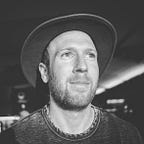Your Purpose is Your Best Experience Designer
Why the most powerful way to sculpt your customers experience is to authentically stand for something.
The greatest customer experiences come from passion and purpose, not relentlessly use data to beat out the small kinks in an already flat service. When the iPad was introduced, Jony Ive, Apple’s head of design, talked about his passion for creating things that seemed “magical”. Products that reach so far beyond what any customer might have expect, that they might seem like wizardry. This is not done by creating ‘empathy maps’ or customer surveys. You don’t do this with your new ‘customer centric innovation process’. You design magical experiences by setting out to amaze people — and it all begins with an attitude, a purpose and a passion.
We lack the ‘creative courage’ to do something that is truly generative and meaningful for people.
Yes you might say, but businesses need to be pragmatic, and stick to the ‘core business’. Pragmatism is important, but if we are so pragmatic that we never look up from our charts, if our data driven processes are squeezed into shorter and shorter time frames, we loose the ability to create experiences that are “insanely great” — to borrow one of Steve Jobs’ favorite phrases. We lack the ‘creative courage’, as Tom Kelly calls it, to do something that is truly generative and meaningful for people.
Organizations today create secularized, mechanized and depersonalized experiences. You need to look no further than the tedious security line you hurry up to wait in, so that you can find your 37f seat on your next flight — to be confronted with the extent that people are to often not treated like people. As Umair Haque puts it:
Why is business chronically and often unashamedly at odds with what’s good for people, society, and the natural world? Why is it that if in most boardrooms, you uttered words like “wisdom,” “truth,” “love,” “beauty,” or “justice” — the timeless expressions of the highest human potential — you’d probably end up in handcuffs, a straitjacket, or both?
It is an experience designers job to inspire, amazing and design meaningful experiences for the customers. Business as usual will not do this. There is a precious opportunity for us to use words like “wisdom,” “truth,” “love,” “beauty,” or “justice”, and not be thrown out of the room. Thus experience designers must not accept the old ‘truths’ of business, and begin to shape a new language. It starts with following your own passion to create something meaningful for others.
Havas Media has over the last years compiled a Meaningful Brand Index, working with 1000 brands to measure: “the potential business benefits gained by a brand when it is seen to improve our wellbeing and quality of life.” The results are stunning, they have found that Meaningful Brands outperform the stock market by 133%.
The most powerful way to sculpt you customers experience is to authentically stand for something — to have a purpose.
Eminent experience designer Nathan Schedroff did research with over 300,000 people globally trying to understand, ‘What types of meaningful experiences do people value?’ He found what he calls ‘15 Core Meanings’ including: accomplishment, beauty, freedom, oneness, wonder… and of course love. These are the things we live for, and thus what we should design for. The experiences that really matter to us are those that are meaningfully life-enhancing. Thus at the heart of designing meaningful experiences, is a desire to re-enchant the world.
… accomplishment, beauty, freedom, oneness, wonder… and of course love. These are the things we live for, and thus what we should design for.
Kaospilot Experience Design
Since 1991, Kaospilot have worked systematically with the management of change and co-creation processes. We are a creative and experience design driven school with 100 inquisitive rule breakers from all over the world and a consultancy house that makes training programs in leadership, innovation, creativity and experience design. We teach experience design through applying theory to real world cases that the participants bring into our courses.
Learn more about our in-house and open sign up Kaospilot Experience Design Course
Connect with us on: Facebook
